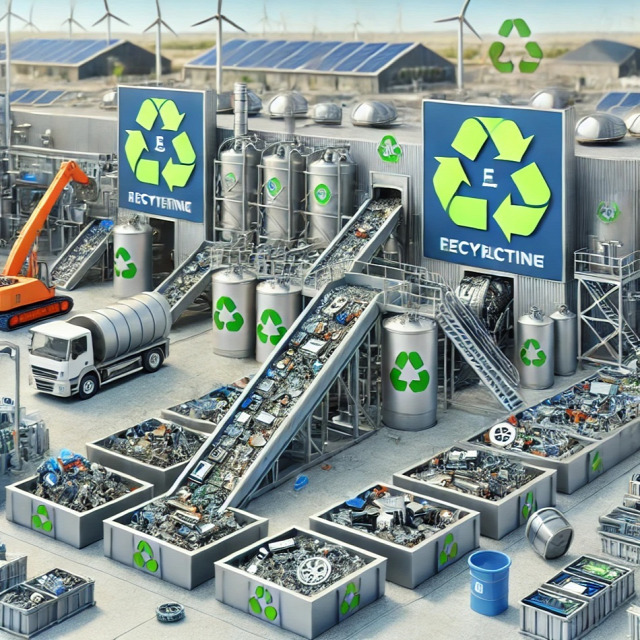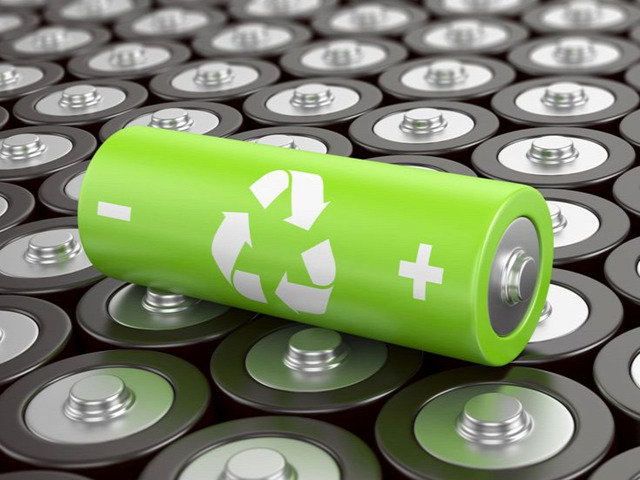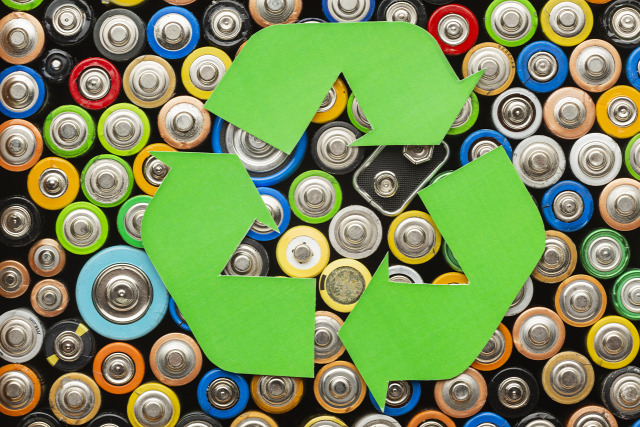
As the world shifts towards electrification and renewable energy, lithium-ion batteries (LIBs) have become the backbone of technologies like electric vehicles (EVs), consumer electronics, and grid energy storage. However, the growing reliance on these batteries poses a challenge: how to manage the surge in used batteries in an environmentally sustainable way.
Enter the lithium-ion battery recycling industry—a rapidly evolving industry that not only addresses waste management but also supports the transition to a circular economy.
The lithium-ion battery recycling market was valued at $3.54 billion in 2023, and it is expected to grow at a CAGR of 21.08% and reach $23.96 billion by 2033.
What is Lithium-Ion Battery Recycling?
“Lithium-Ion Battery Recycling” involves the recovery of valuable materials such as lithium, nickel, cobalt, and manganese from spent batteries. These materials are then reprocessed and reused in the production of new batteries or other industrial applications, reducing the demand for virgin resources.
With the exponential growth of EVs and portable electronics, the recycling market is becoming crucial for mitigating supply chain risks, reducing environmental impact, and promoting sustainable resource management.
Role of Lithium-Ion Battery Recycling in a Circular Economy
A circular economy focuses on minimizing waste and maximizing resource efficiency by keeping materials in use for as long as possible. Lithium-ion battery recycling supports this concept in the following ways:
Resource Recovery: Recycling enables the recovery of critical materials like lithium, cobalt, and nickel, which are finite and predominantly sourced from environmentally sensitive regions. By reclaiming these materials, recycling reduces the pressure on mining activities and helps stabilize raw material supply chains.
Waste Reduction: Improper disposal of lithium-ion batteries can lead to hazardous waste, contaminating soil and water sources. Recycling minimizes landfill waste and ensures safe handling of toxic components.
Energy Conservation: Extracting raw materials from recycled batteries consumes significantly less energy compared to mining and processing virgin materials. This helps reduce greenhouse gas (GHG) emissions, supporting global climate goals.
Cost Efficiency: Recycled materials are often less expensive than newly mined materials, offering economic benefits to manufacturers while reducing the overall production costs of batteries.
Request for a sample research report on the lithium-ion battery recycling market
Key Growth Drivers of the Market
Booming Electric Vehicle Industry:
- The rapid growth of EV adoption drives the need for lithium-ion battery recycling.
- Governments are promoting EVs to reduce emissions, leading to more spent batteries.
- Recycling ensures a steady supply of critical materials for EV production.
Stringent Environmental Regulations:
- Strict guidelines for battery disposal and recycling are enforced globally.
- Policies like the EU Battery Directive are spurring investments in recycling infrastructure.
- Regulations aim to minimize environmental impact and promote sustainability.
Rising Demand for Critical Materials:
- Growing demand for lithium-ion batteries surpasses the availability of raw materials.
- Recycling offers a sustainable solution to reduce dependency on mining.
- It addresses supply chain risks from geopolitical tensions and trade restrictions.
Technological Advancements:
- Innovations in recycling technologies improve material recovery rates.
- Processes like hydrometallurgical and pyrometallurgical methods enhance efficiency.
- These advancements make recycling more cost-effective and eco-friendly.
Lithium-Ion Battery Recycling Market Segmentation
Segmentation by Battery Chemistry:
- Lithium-Cobalt Oxide (LCO)
- Lithium-Nickel Manganese Cobalt (Li-NMC)
- Lithium-Manganese Oxide (LMO)
- Lithium-Iron Phosphate (LFP)
- Lithium-Nickel Cobalt Aluminum Oxide (NCA)
Segmentation by Recycling Process:
- Hydrometallurgy
- Pyrometallurgy
- Direct Recycling
Segmentation by Region:
- North America
- Europe
- Asia-Pacific
- Rest-of-the-World
Key Market Challenges
While the market holds immense potential, it faces several challenges:
- Complex Battery Composition: Lithium-ion batteries come in various chemistries, making the recycling process complex and requiring specialized technologies to recover materials efficiently.
- High Initial Costs: Setting up recycling facilities involves significant capital investment in technology, infrastructure, and logistics.
- Logistics and Collection: Efficient collection and transportation of used batteries are critical to the recycling process but remain a logistical challenge due to fragmented supply chains.
- Regulatory Fragmentation: The lack of standardized regulations across regions creates hurdles for the global recycling market, making it difficult for companies to operate seamlessly.
Future Market Outlook
The lithium-ion battery recycling market is poised for exponential growth, with a projected compound annual growth rate (CAGR) exceeding 20% over the next decade. Key trends shaping the future include:
- Scaling Up Recycling Infrastructure
- Development of Closed-Loop Systems
- Collaborations and Partnerships
- Emergence of Digital Platforms
Get more insights on the Automotive Market Research Reports
Prominent Recyclers in the Lithium-Ion Battery Recycling Industry
The companies that are profiled in the market of lithium-ion battery recycling report have been selected based on inputs gathered from primary experts and analyzing company coverage, product portfolio, and market penetration.
- ACCUREC-Recycling GmbH
- American Battery Technology Company
- Cirba Solutions
- Contemporary Amperex Technology Co., Ltd.
- Duesenfeld
- ECOBAT
- Fortum
- Ganfeng Lithium Co., Ltd.
- Neometals Ltd.
- Li-Cycle Corp.
Conclusion
The lithium-ion battery recycling industry is a cornerstone of the global transition to a circular economy. By addressing critical challenges such as resource scarcity, waste management, and environmental degradation, this market is paving the way for a sustainable future.



